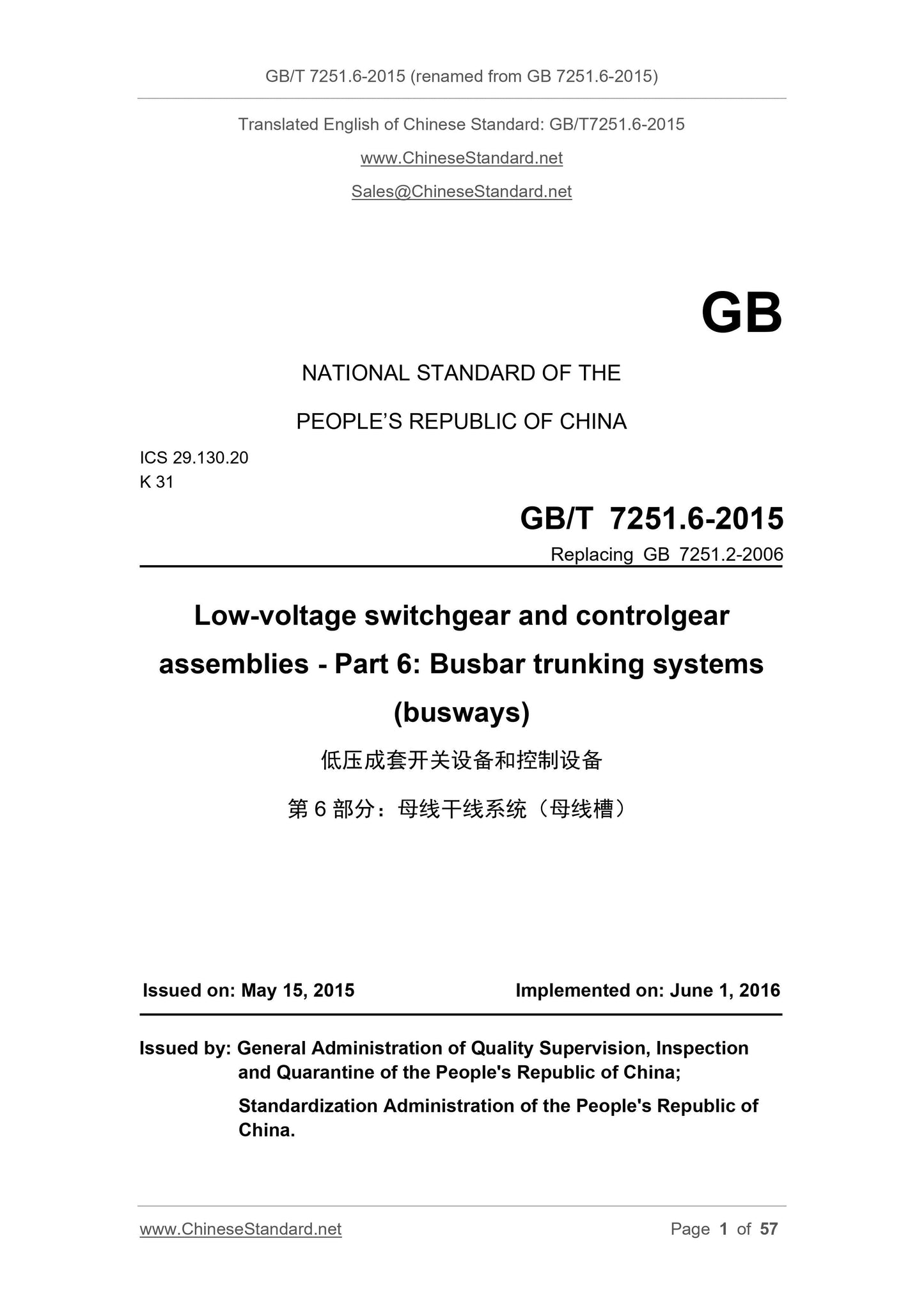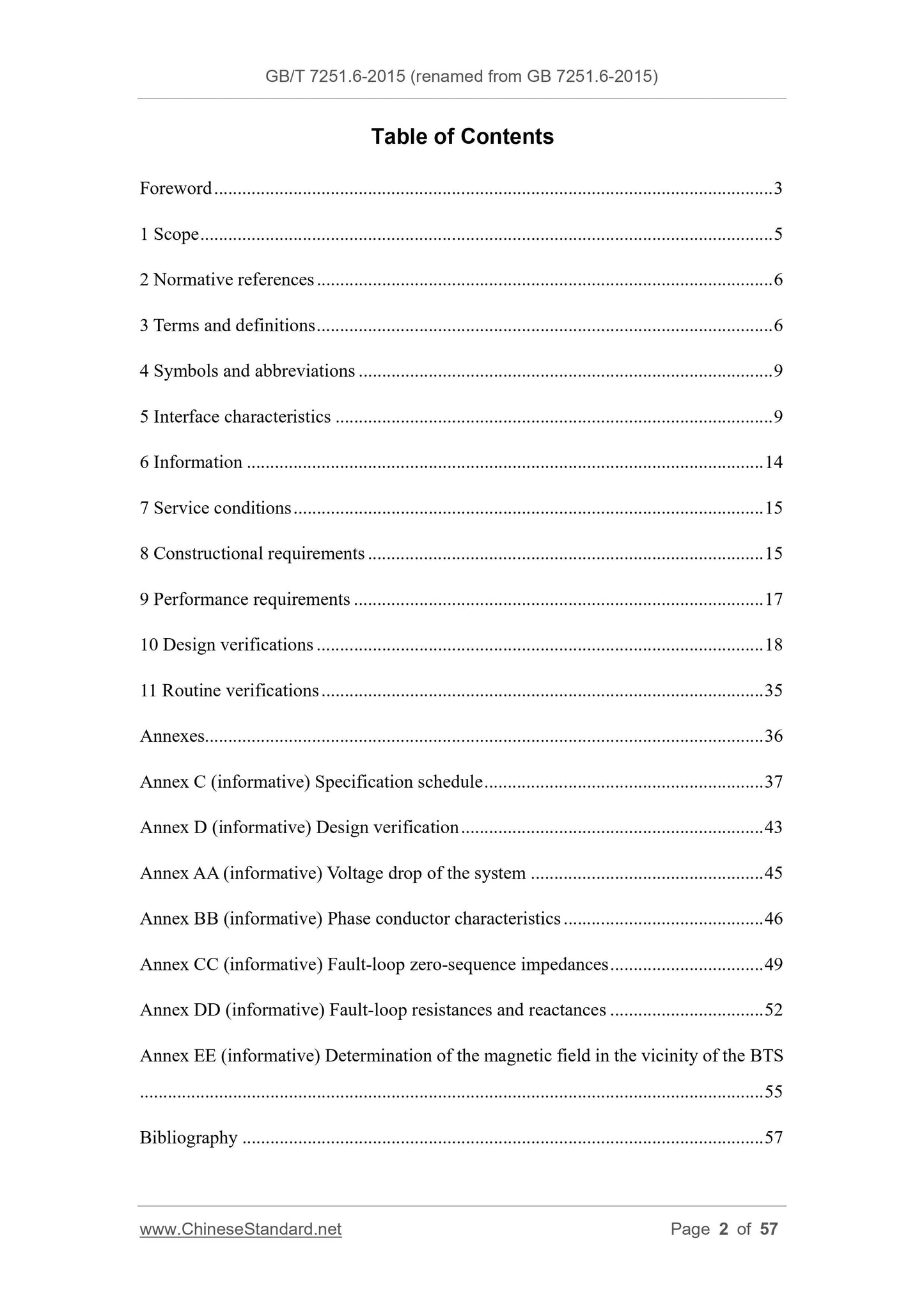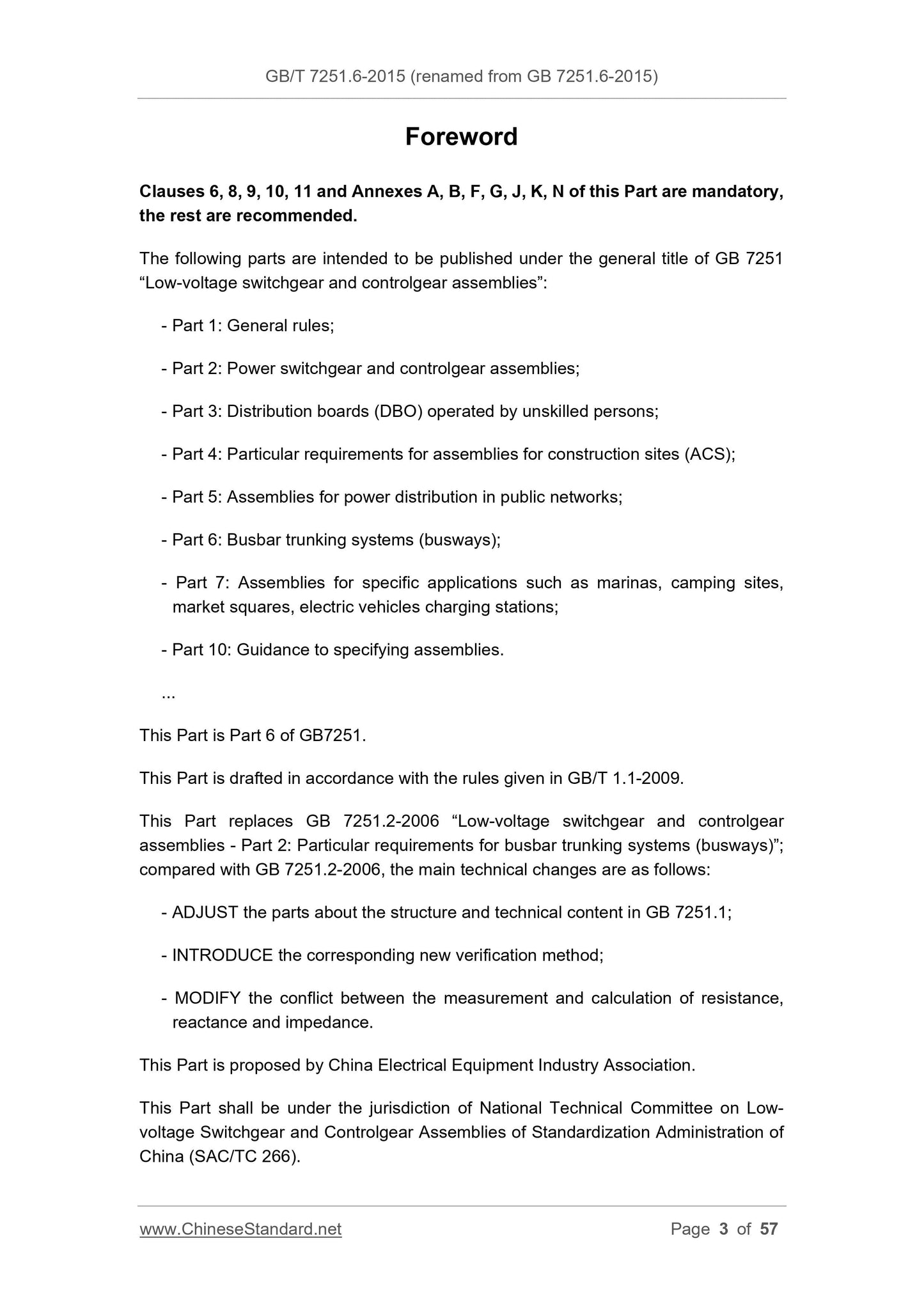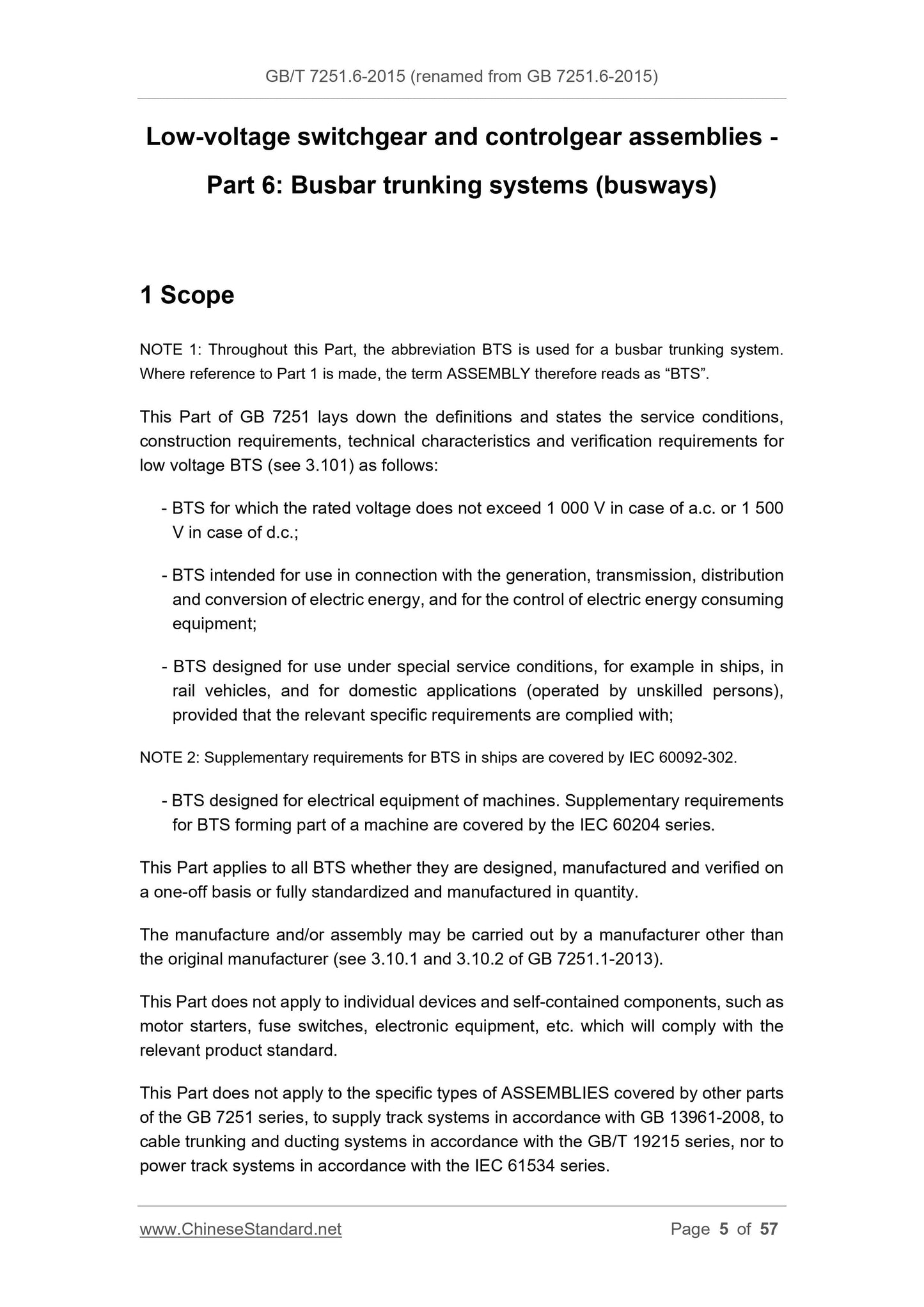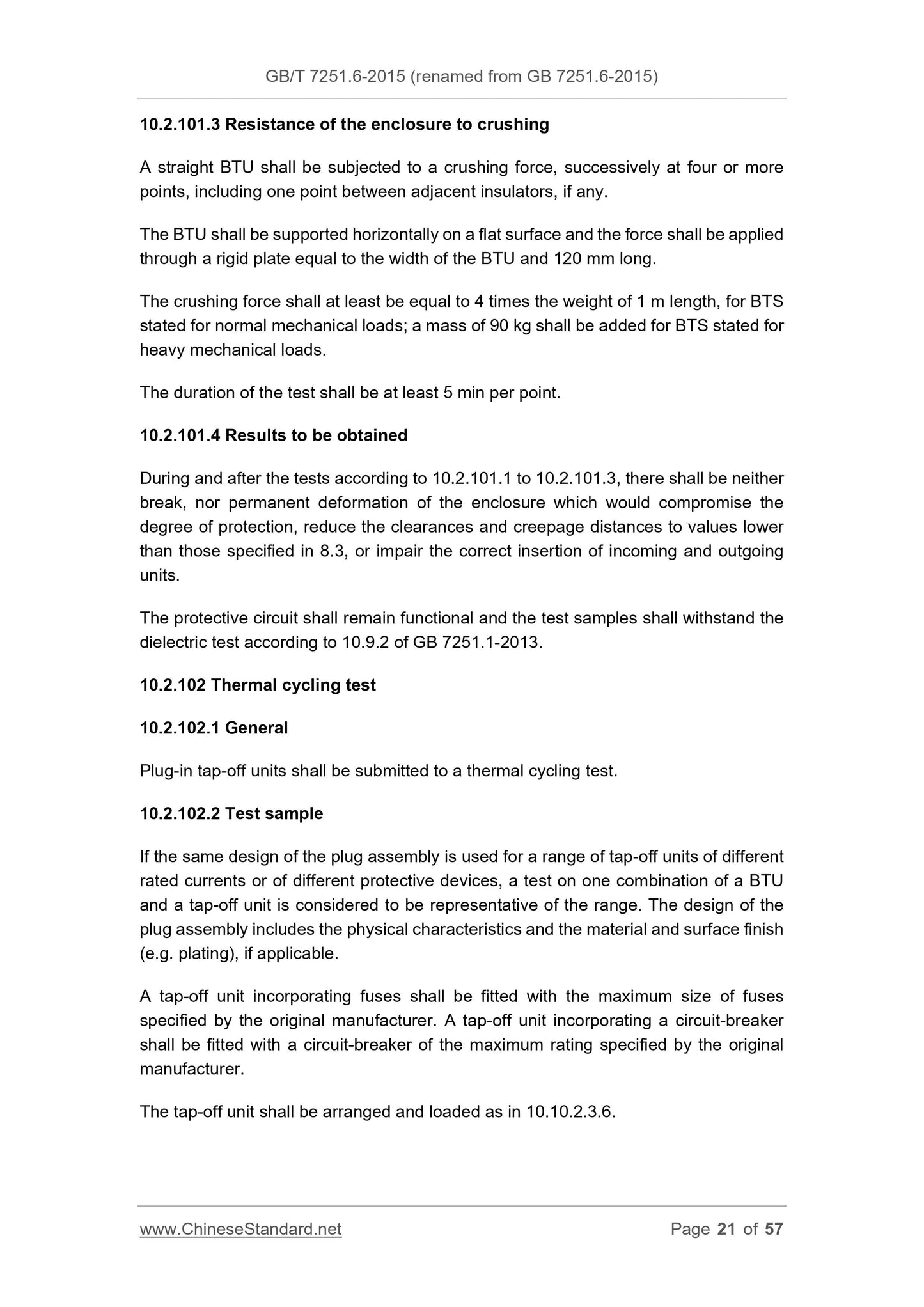1
/
of
5
www.ChineseStandard.us -- Field Test Asia Pte. Ltd.
GB/T 7251.6-2015 English PDF (GB/T7251.6-2015)
GB/T 7251.6-2015 English PDF (GB/T7251.6-2015)
Regular price
$145.00
Regular price
Sale price
$145.00
Unit price
/
per
Shipping calculated at checkout.
Couldn't load pickup availability
GB/T 7251.6-2015: Low-voltage switchgear and controlgear assemblies -- Part 6: Busbar trunking systems (busways)
Delivery: 9 seconds. Download (and Email) true-PDF + Invoice.Get Quotation: Click GB/T 7251.6-2015 (Self-service in 1-minute)
Newer / historical versions: GB/T 7251.6-2015
Preview True-PDF
Scope
NOTE 1: Throughout this Part, the abbreviation BTS is used for a busbar trunking system.Where reference to Part 1 is made, the term ASSEMBLY therefore reads as “BTS”.
This Part of GB 7251 lays down the definitions and states the service conditions,
construction requirements, technical characteristics and verification requirements for
low voltage BTS (see 3.101) as follows:
- BTS for which the rated voltage does not exceed 1 000 V in case of a.c. or 1 500
V in case of d.c.;
- BTS intended for use in connection with the generation, transmission, distribution
and conversion of electric energy, and for the control of electric energy consuming
equipment;
- BTS designed for use under special service conditions, for example in ships, in
rail vehicles, and for domestic applications (operated by unskilled persons),
provided that the relevant specific requirements are complied with;
NOTE 2: Supplementary requirements for BTS in ships are covered by IEC 60092-302.
- BTS designed for electrical equipment of machines. Supplementary requirements
for BTS forming part of a machine are covered by the IEC 60204 series.
This Part applies to all BTS whether they are designed, manufactured and verified on
a one-off basis or fully standardized and manufactured in quantity.
The manufacture and/or assembly may be carried out by a manufacturer other than
the original manufacturer (see 3.10.1 and 3.10.2 of GB 7251.1-2013).
This Part does not apply to individual devices and self-contained components, such as
motor starters, fuse switches, electronic equipment, etc. which will comply with the
relevant product standard.
This Part does not apply to the specific types of ASSEMBLIES covered by other parts
of the GB 7251 series, to supply track systems in accordance with GB 13961-2008, to
cable trunking and ducting systems in accordance with the GB/T 19215 series, nor to
power track systems in accordance with the IEC 61534 series.
10.2.101.3 Resistance of the enclosure to crushing
A straight BTU shall be subjected to a crushing force, successively at four or more
points, including one point between adjacent insulators, if any.
The BTU shall be supported horizontally on a flat surface and the force shall be applied
through a rigid plate equal to the width of the BTU and 120 mm long.
The crushing force shall at least be equal to 4 times the weight of 1 m length, for BTS
stated for normal mechanical loads; a mass of 90 kg shall be added for BTS stated for
heavy mechanical loads.
The duration of the test shall be at least 5 min per point.
10.2.101.4 Results to be obtained
During and after the tests according to 10.2.101.1 to 10.2.101.3, there shall be neither
break, nor permanent deformation of the enclosure which would compromise the
degree of protection, reduce the clearances and creepage distances to values lower
than those specified in 8.3, or impair the correct insertion of incoming and outgoing
units.
The protective circuit shall remain functional and the test samples shall withstand the
dielectric test according to 10.9.2 of GB 7251.1-2013.
10.2.102 Thermal cycling test
10.2.102.1 General
Plug-in tap-off units shall be submitted to a thermal cycling test.
10.2.102.2 Test sample
If the same design of the plug assembly is used for a range of tap-off units of different
rated currents or of different protective devices, a test on one combination of a BTU
and a tap-off unit is considered to be representative of the range. The design of the
plug assembly includes the physical characteristics and the material and surface finish
(e.g. plating), if applicable.
A tap-off unit incorporating fuses shall be fitted with the maximum size of fuses
specified by the original manufacturer. A tap-off unit incorporating a circuit-breaker
shall be fitted with a circuit-breaker of the maximum rating specified by the original
manufacturer.
The tap-off unit shall be arranged and loaded as in 10.10.2.3.6.
Basic Data
| Standard ID | GB/T 7251.6-2015 (GB/T7251.6-2015) |
| Description (Translated English) | Low-voltage switchgear and controlgear assemblies -- Part 6: Busbar trunking systems (busways) |
| Sector / Industry | National Standard (Recommended) |
| Classification of Chinese Standard | K31 |
| Classification of International Standard | 29.130.20 |
| Word Count Estimation | 38,334 |
| Date of Issue | 2015-05-15 |
| Date of Implementation | 2016-06-01 |
| Issuing agency(ies) | General Administration of Quality Supervision, Inspection and Quarantine of the People's Republic of China, Standardization Administration of the People's Republic of China |
Share
